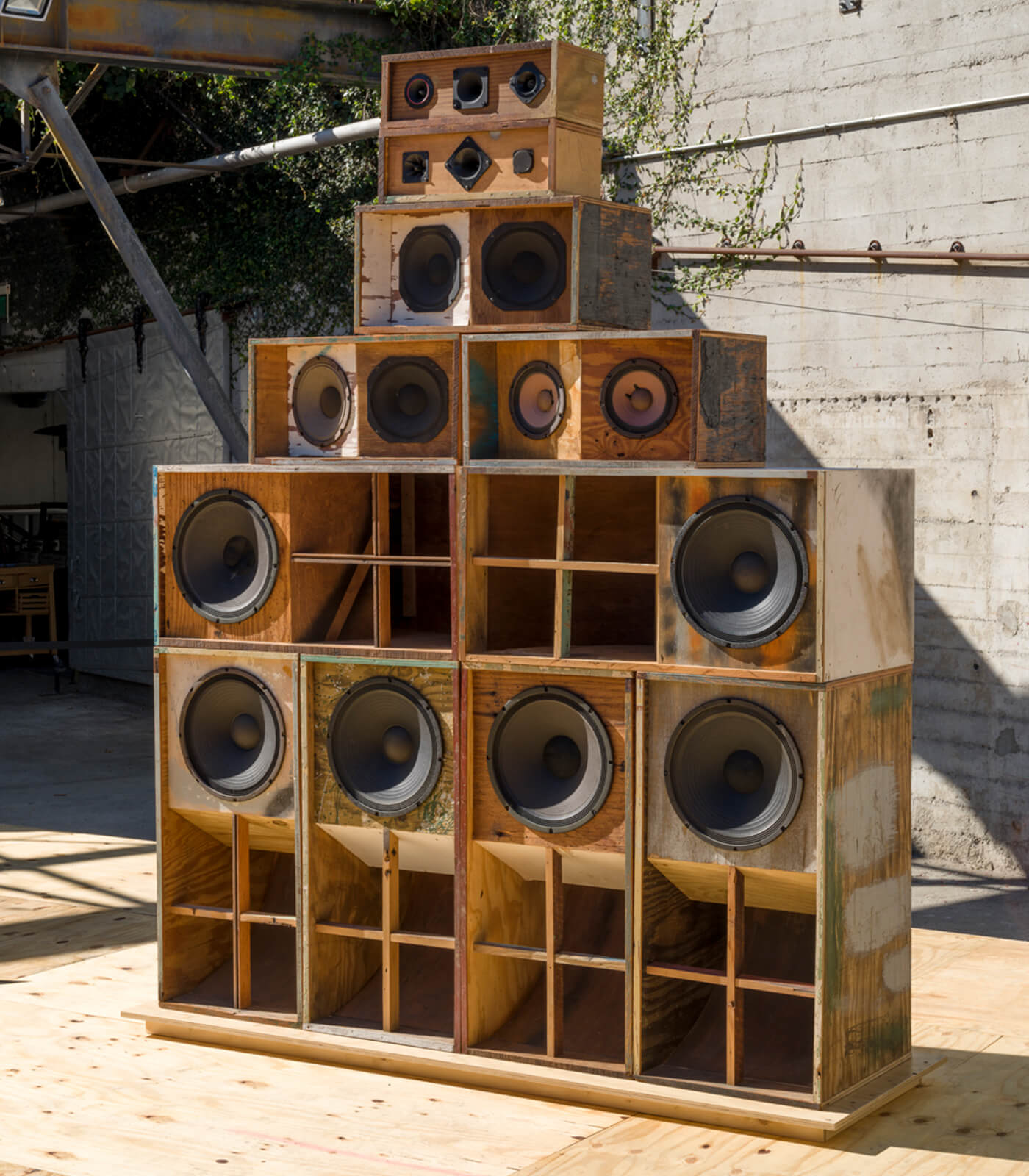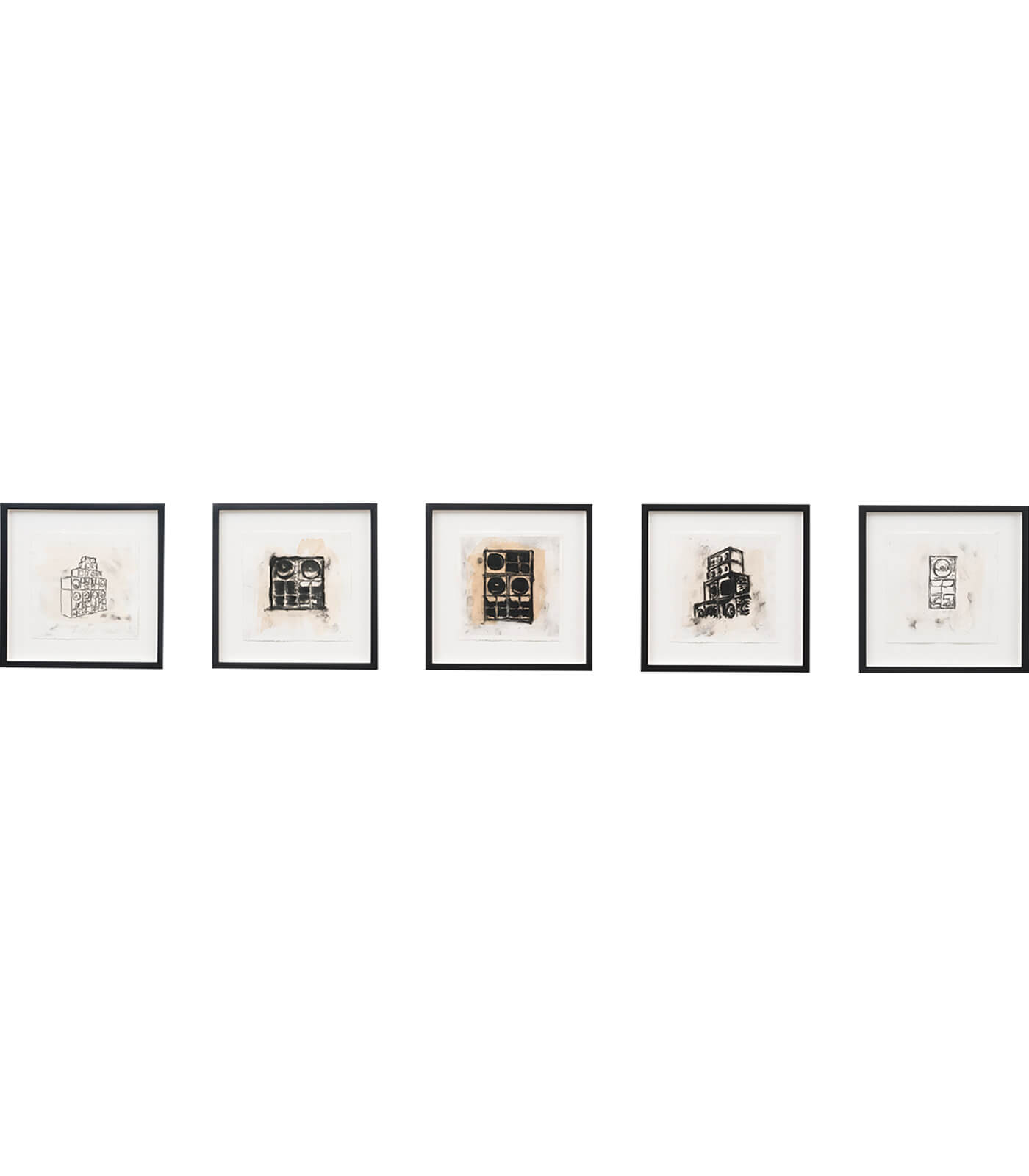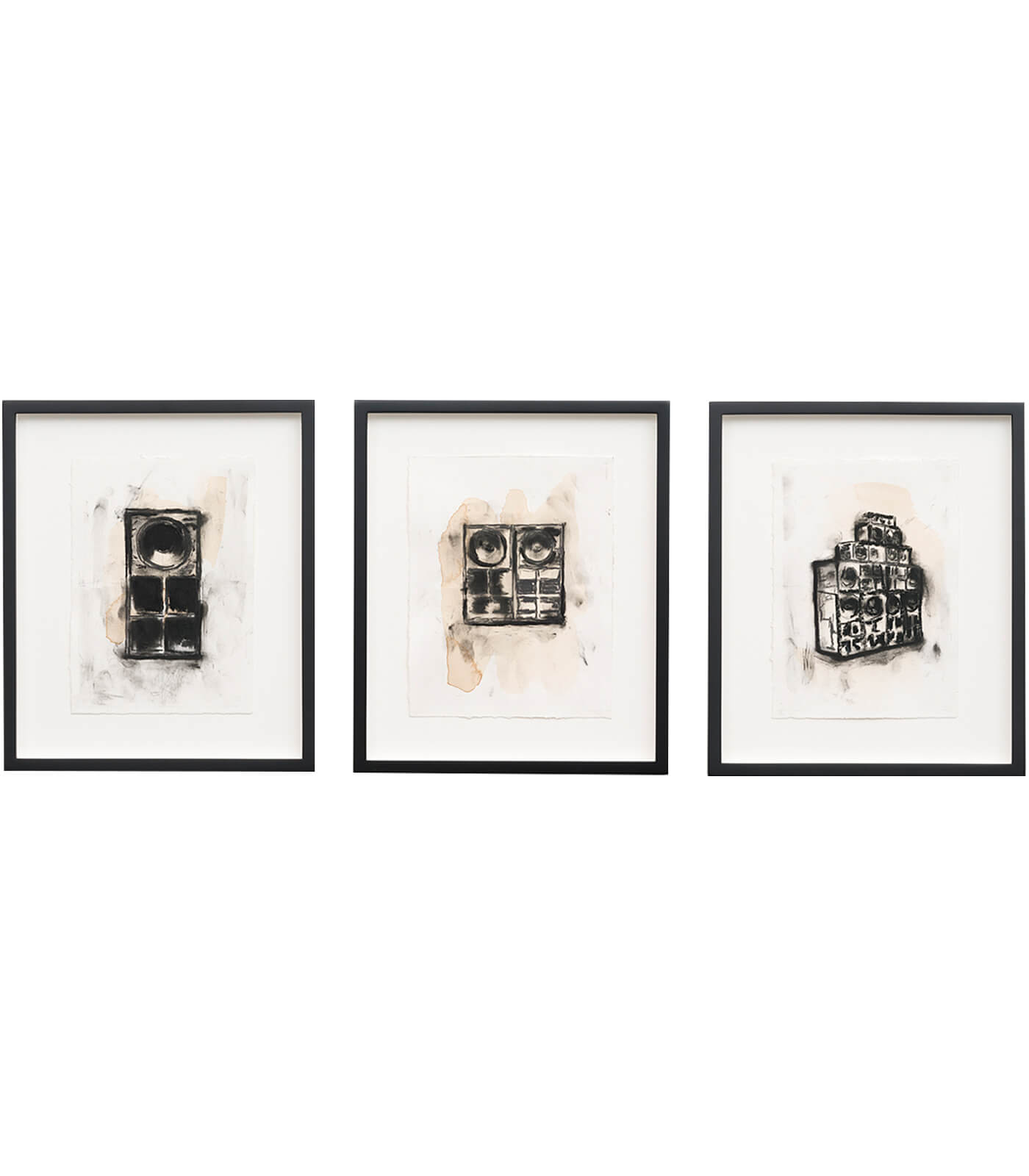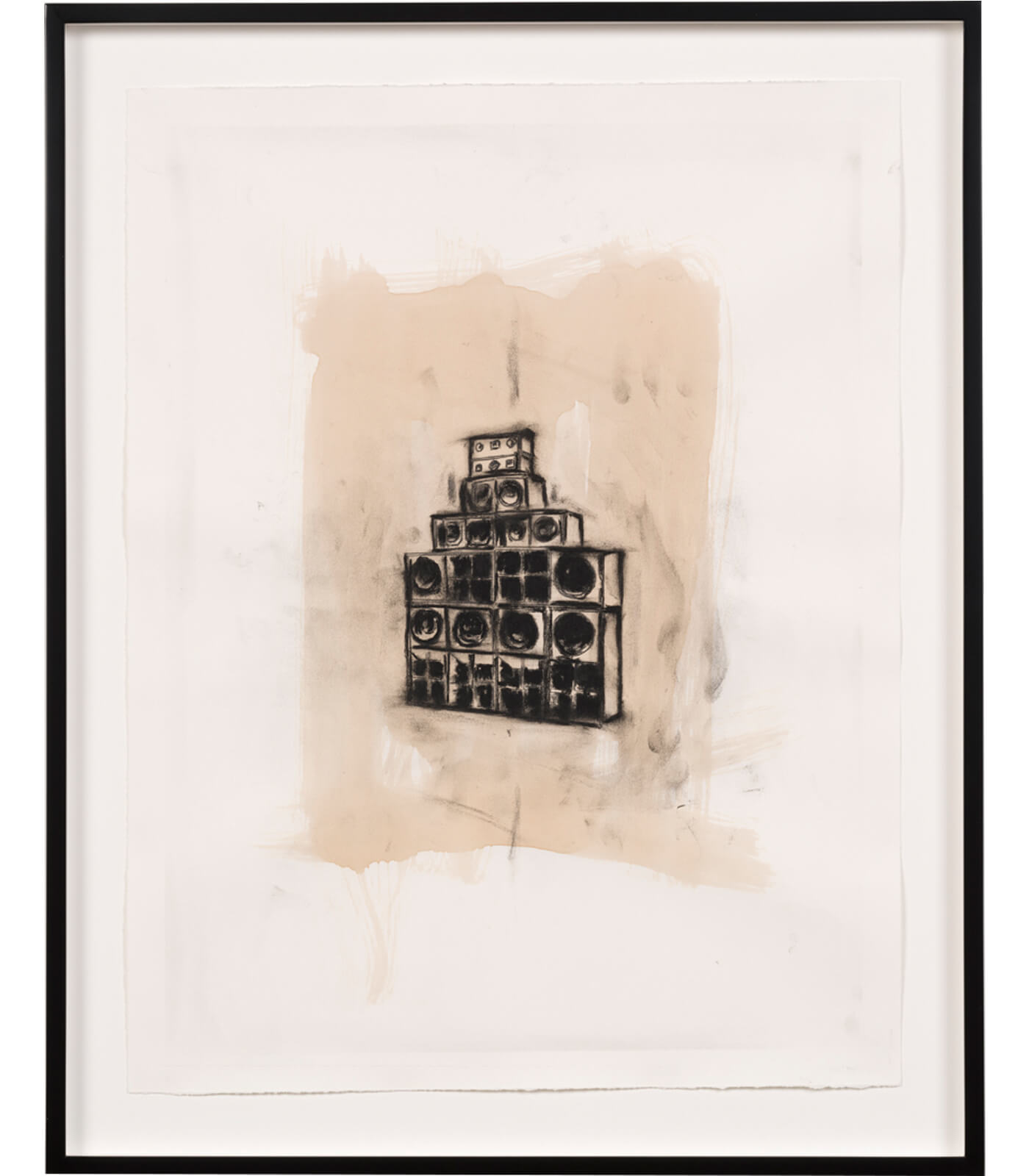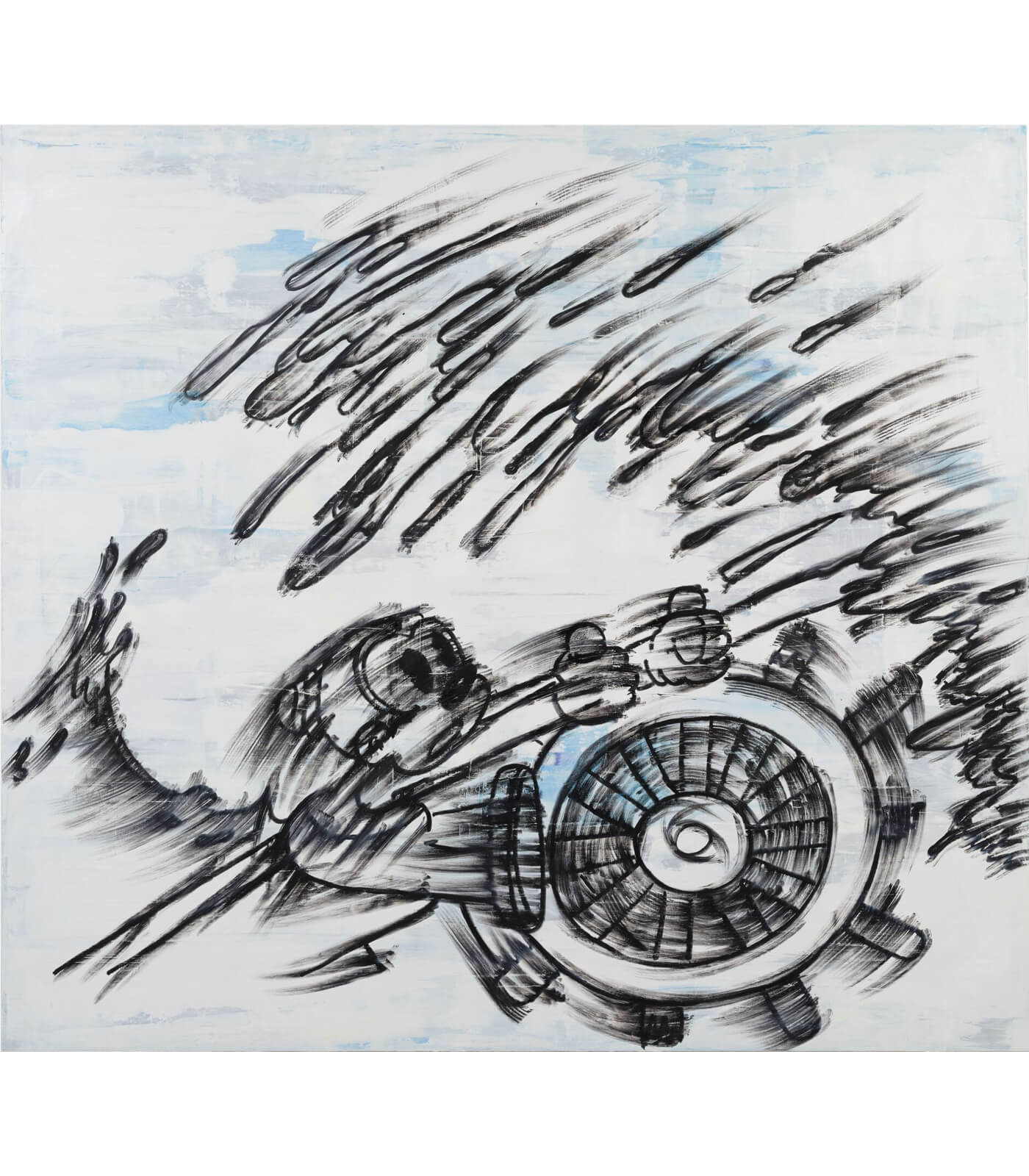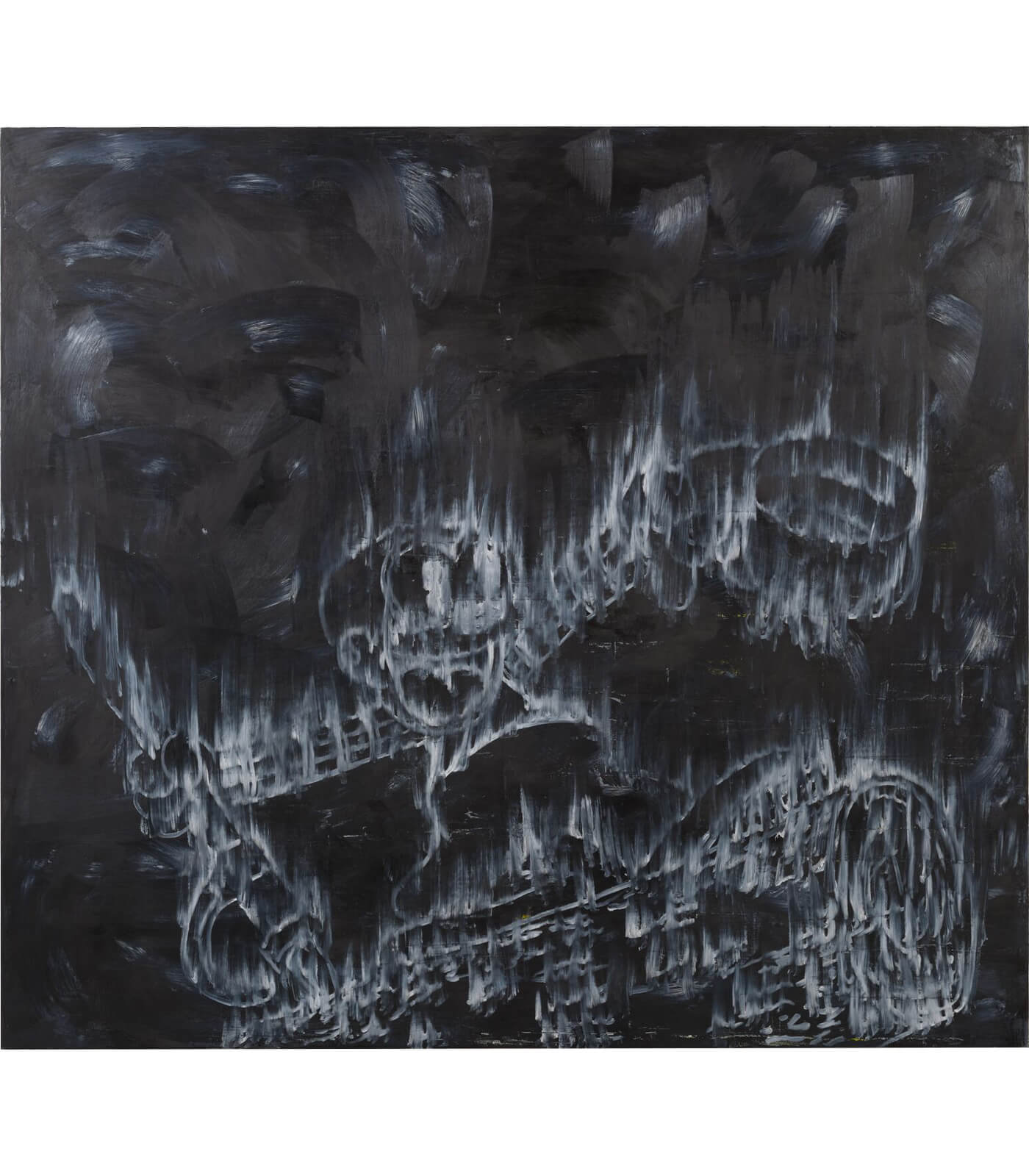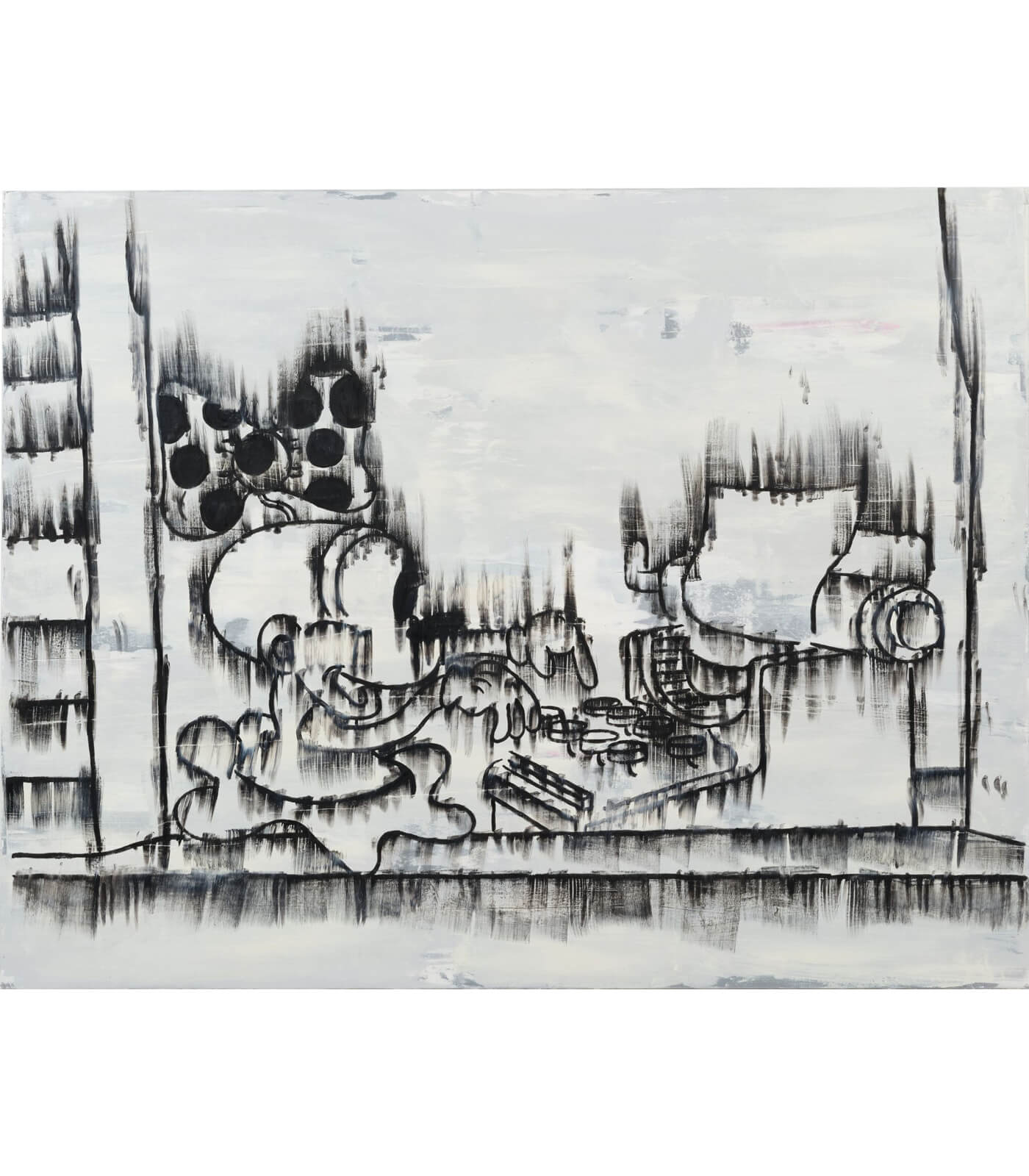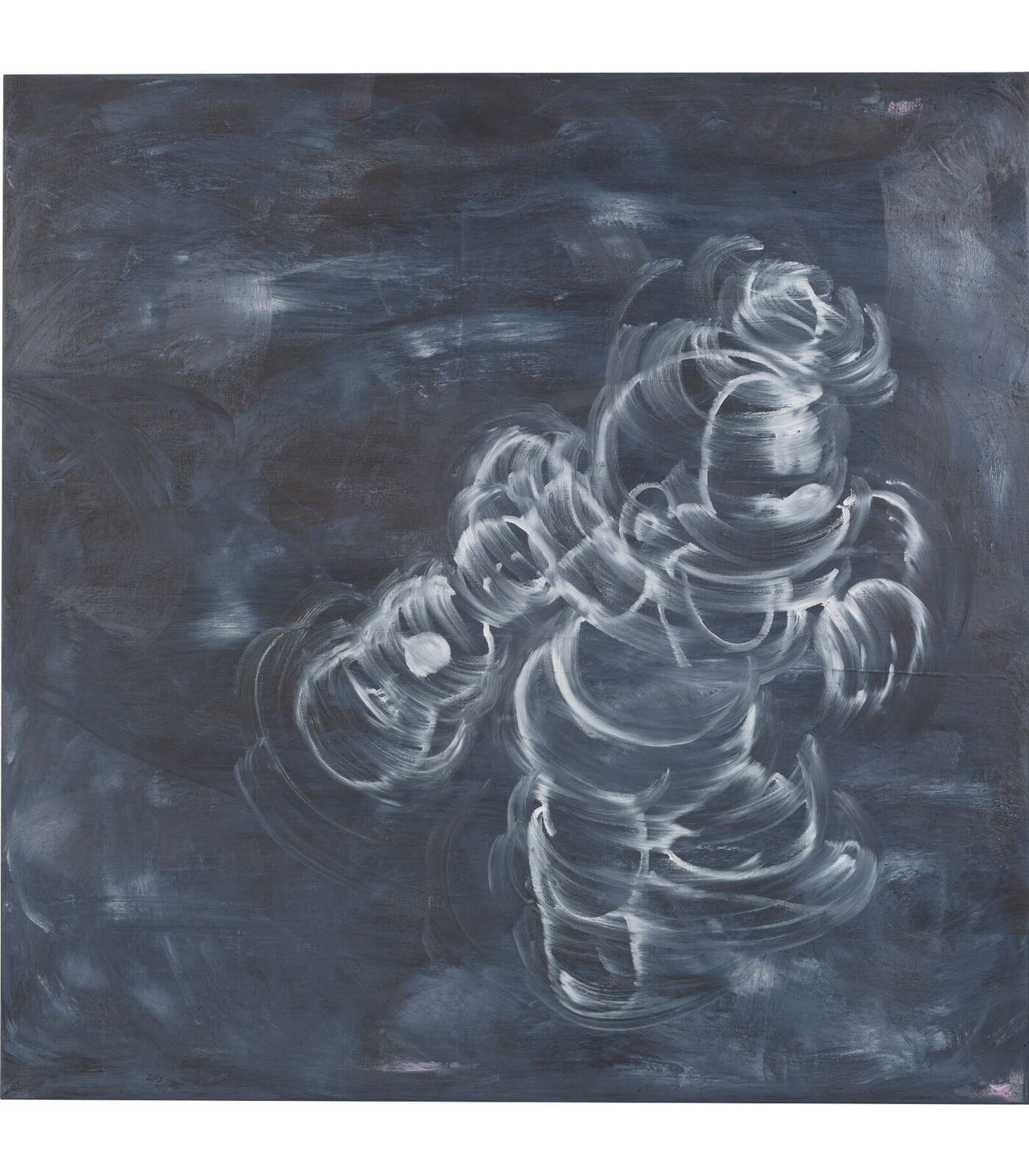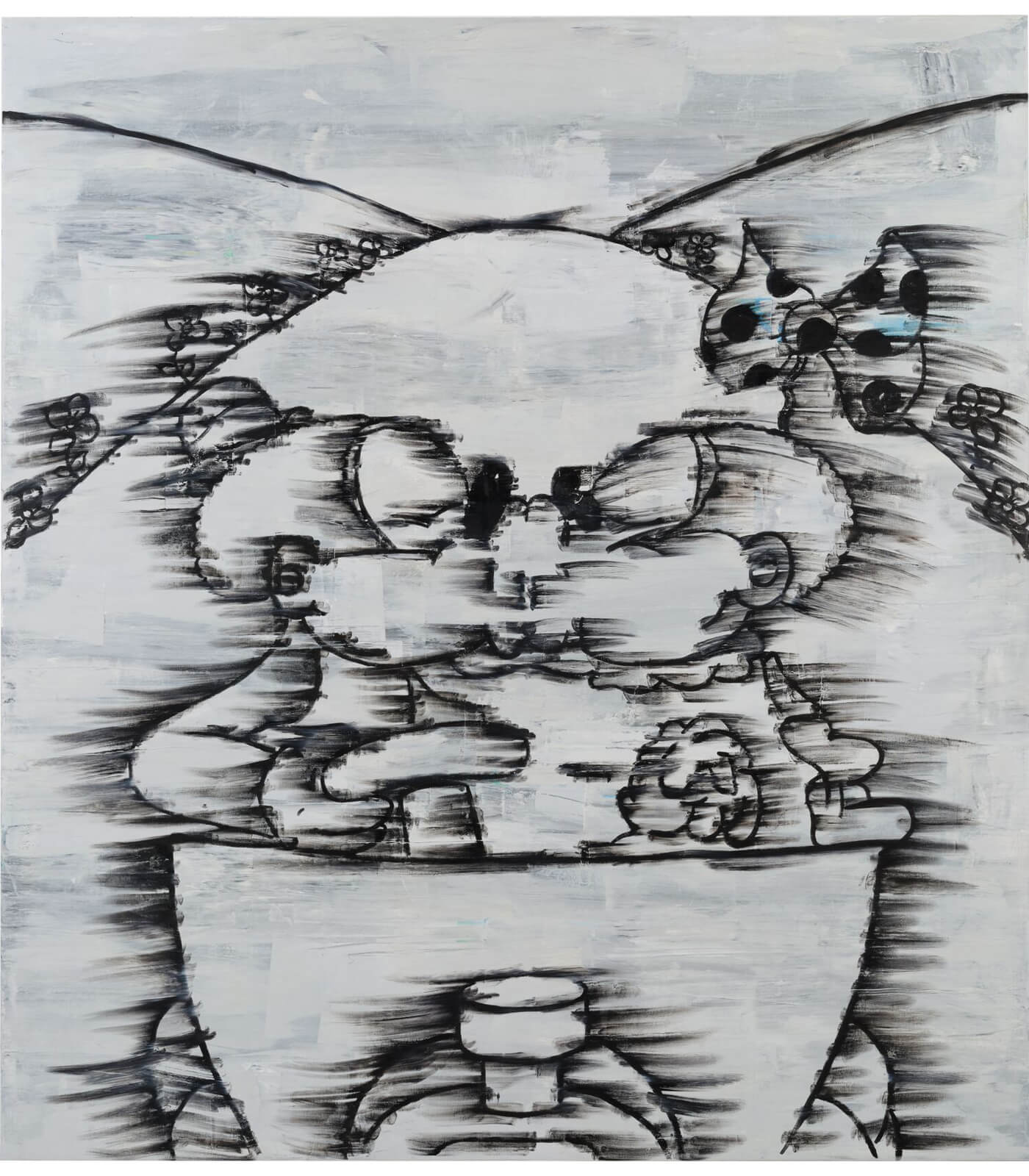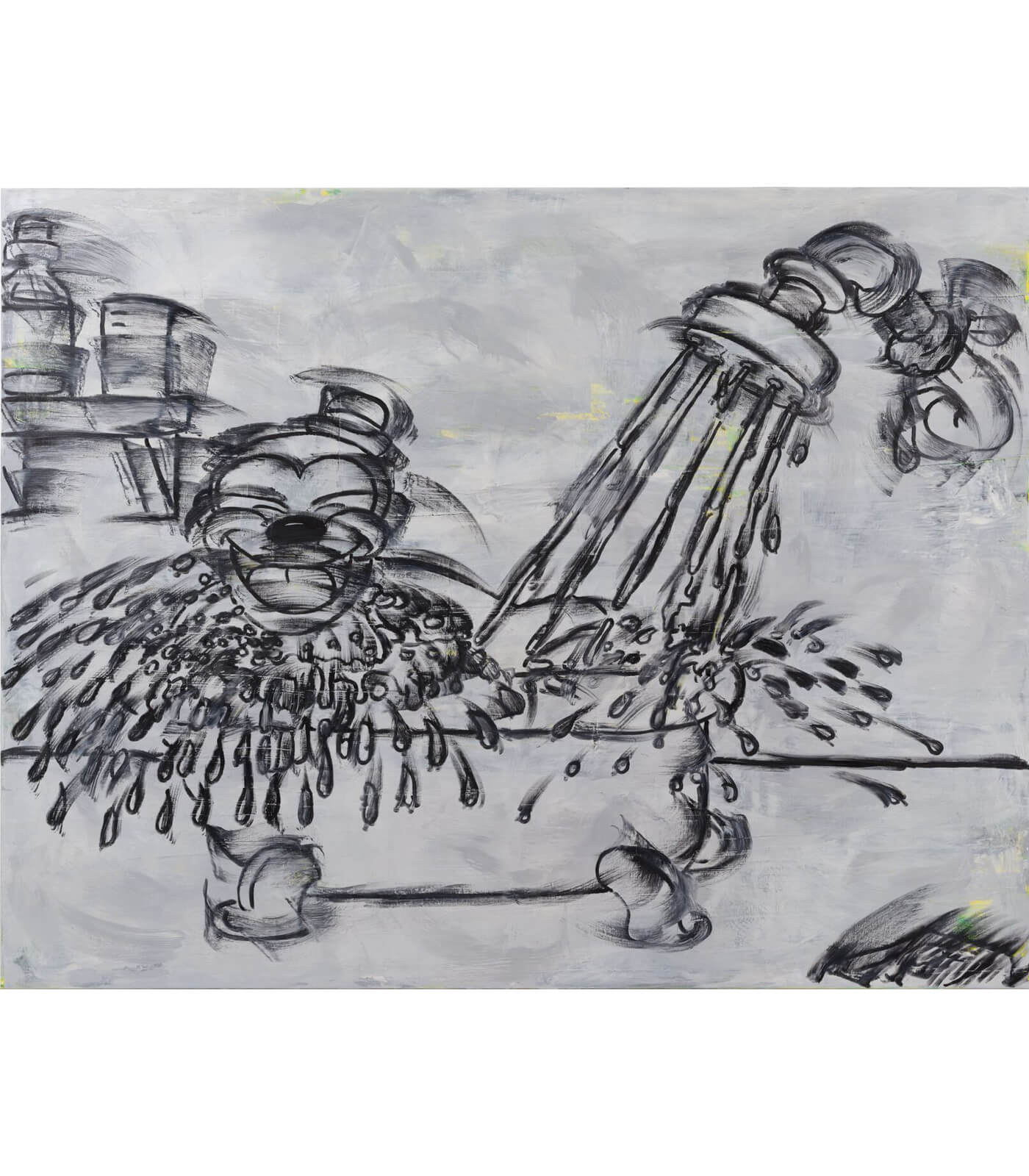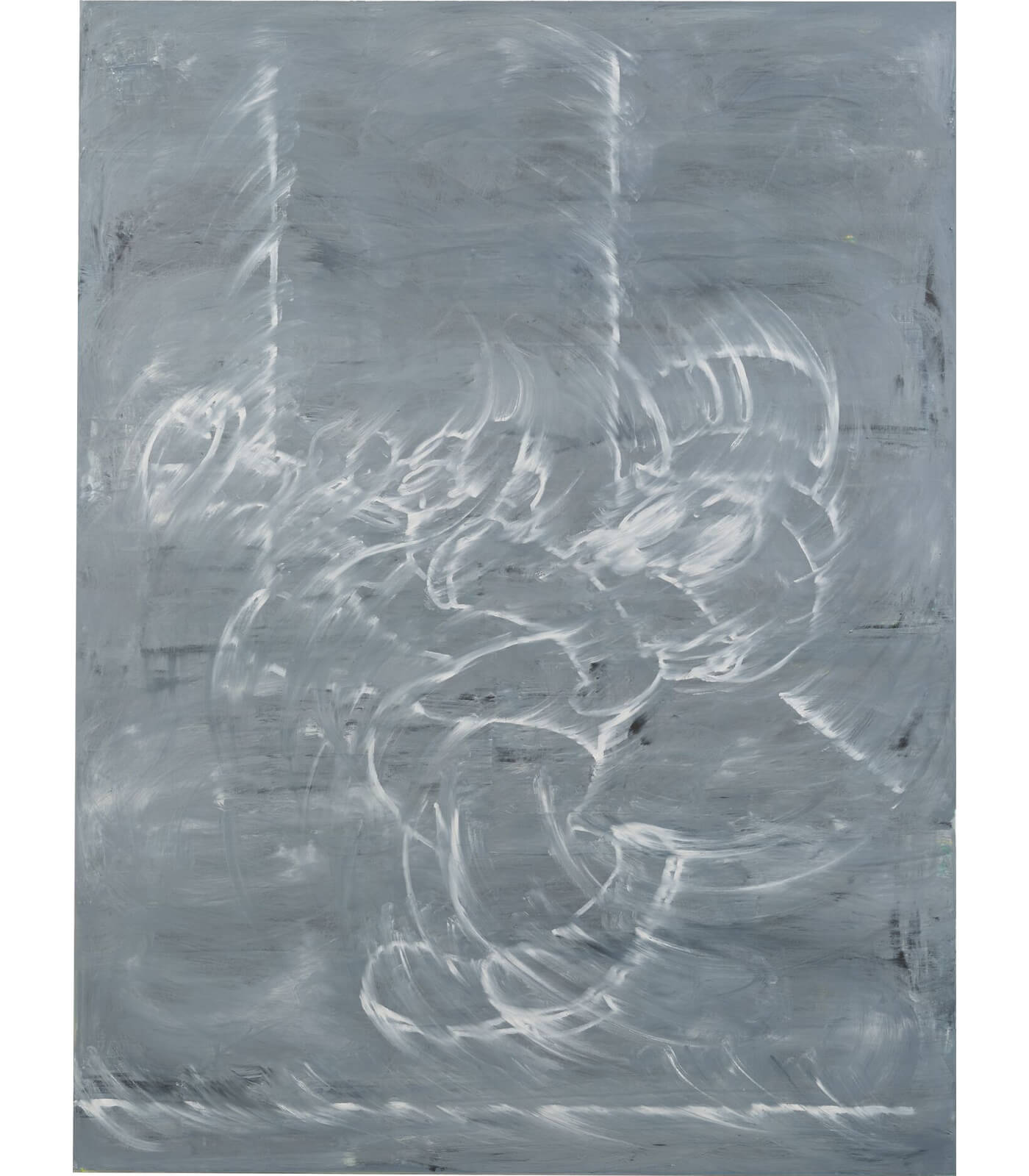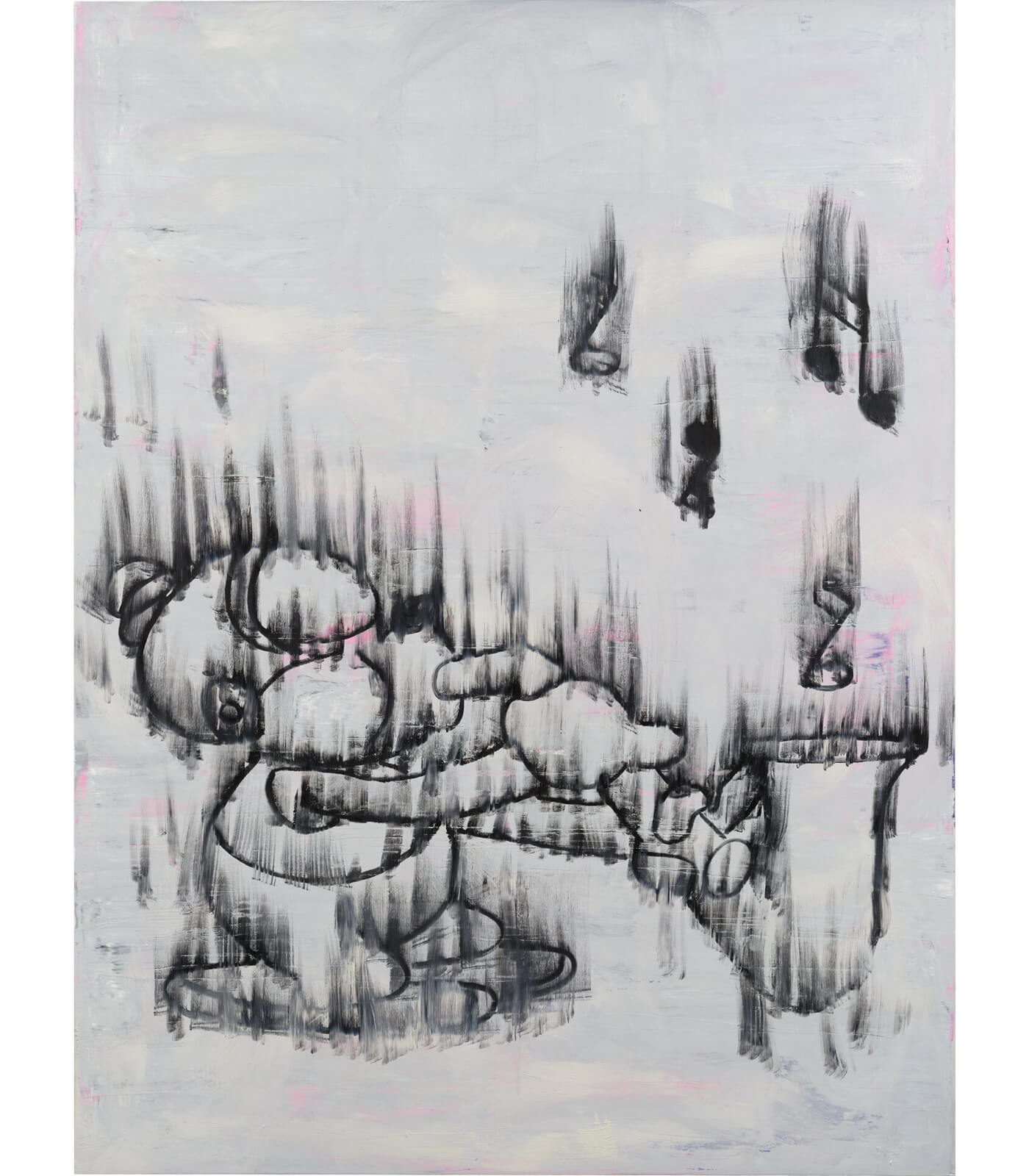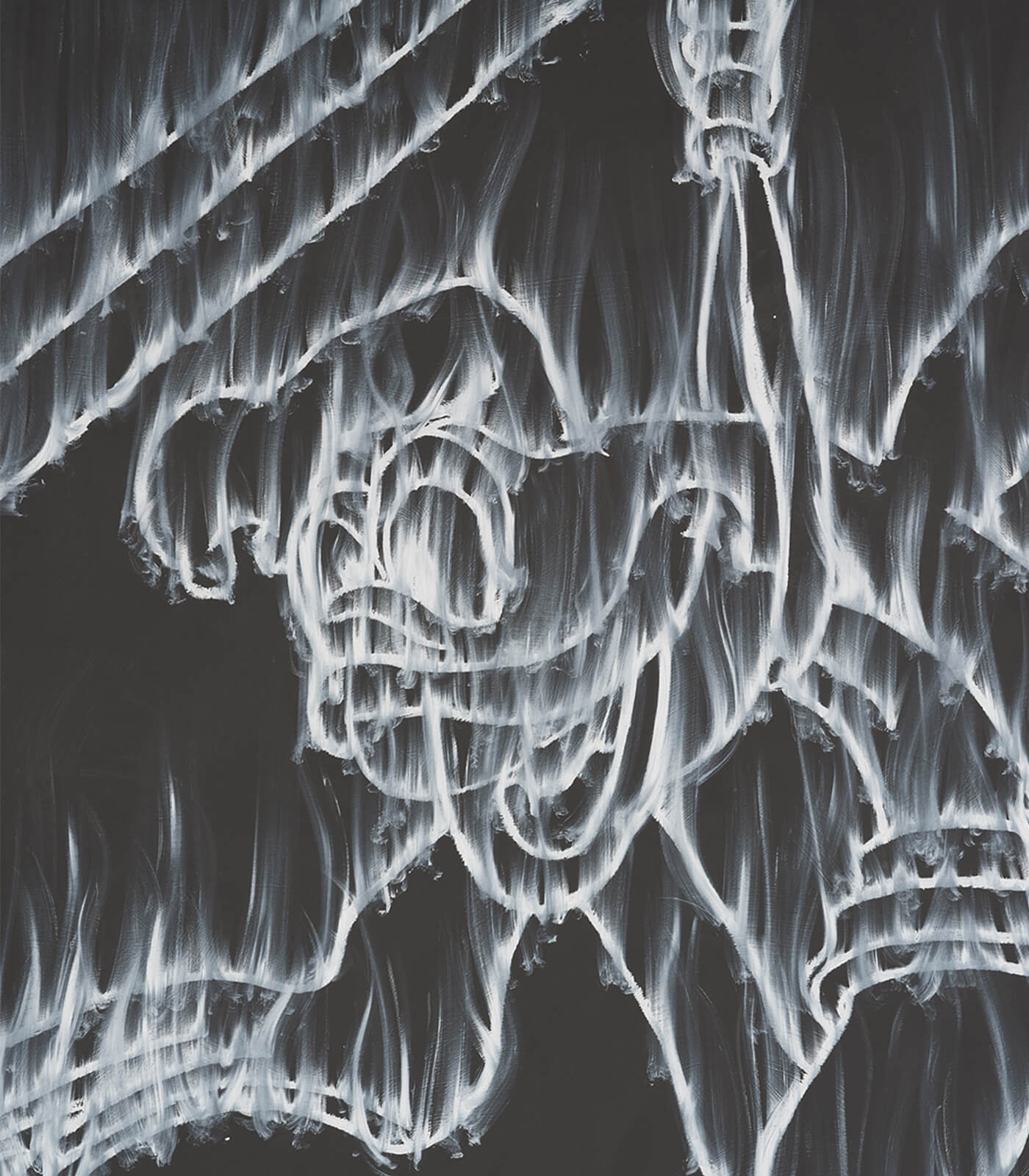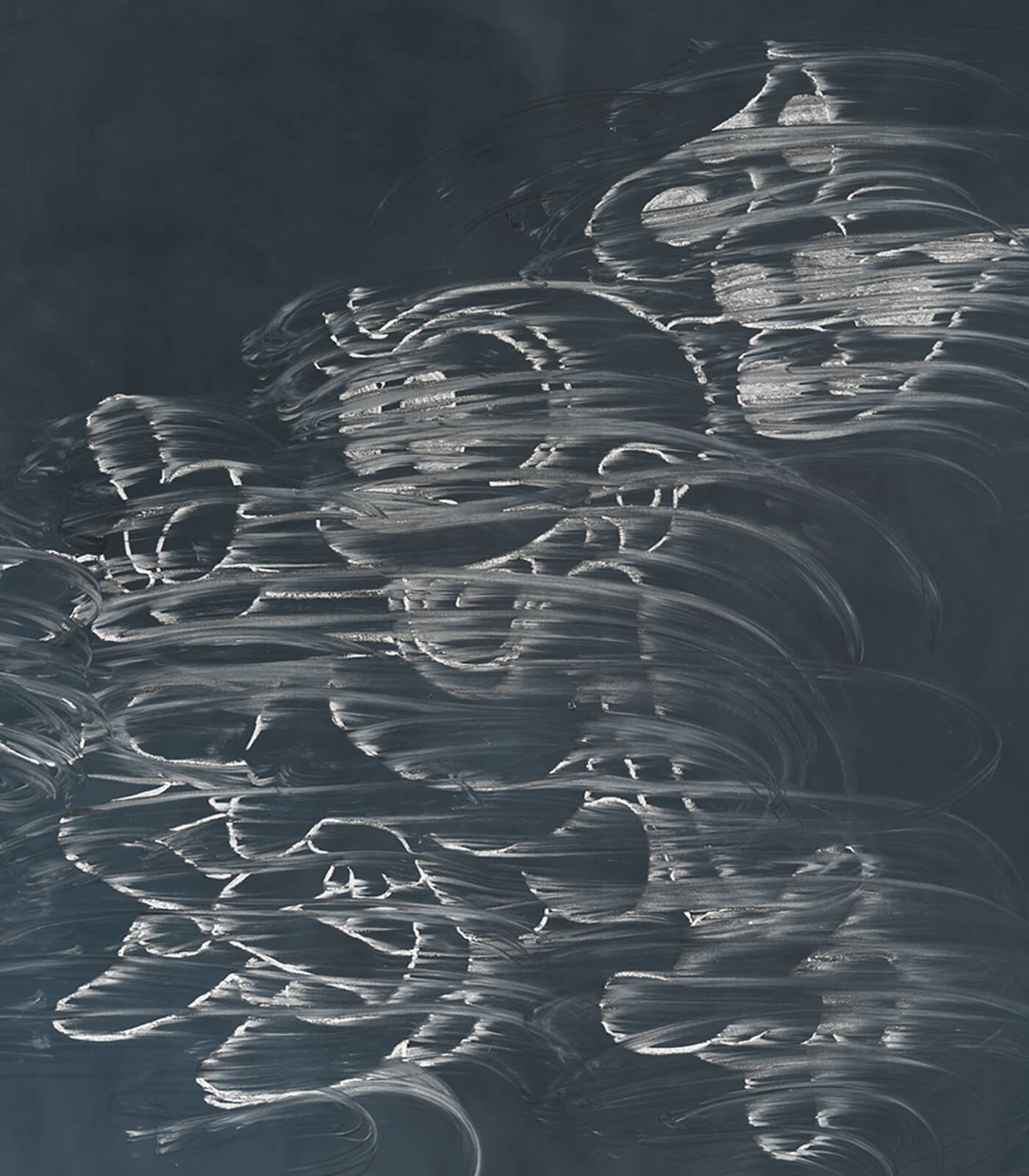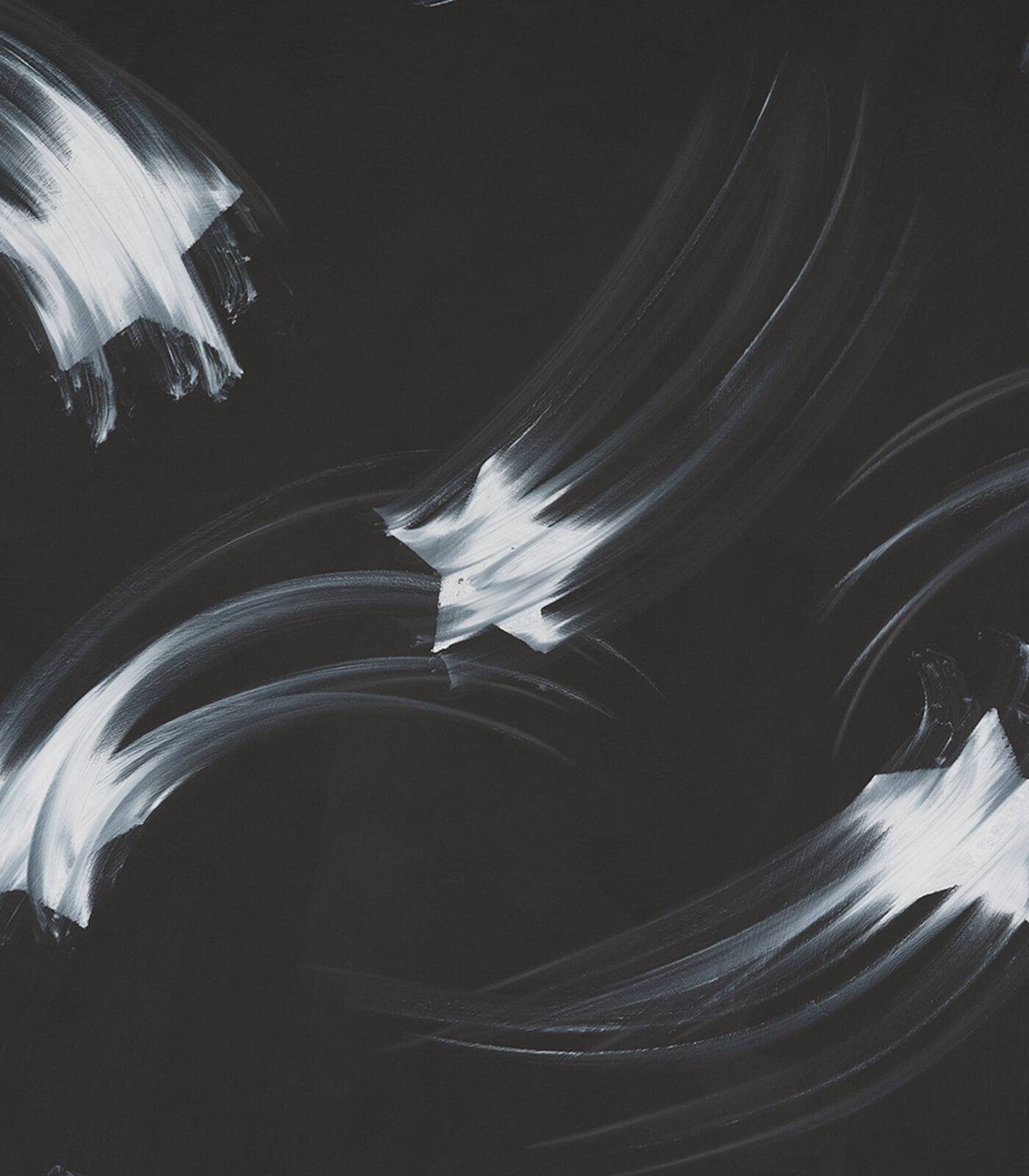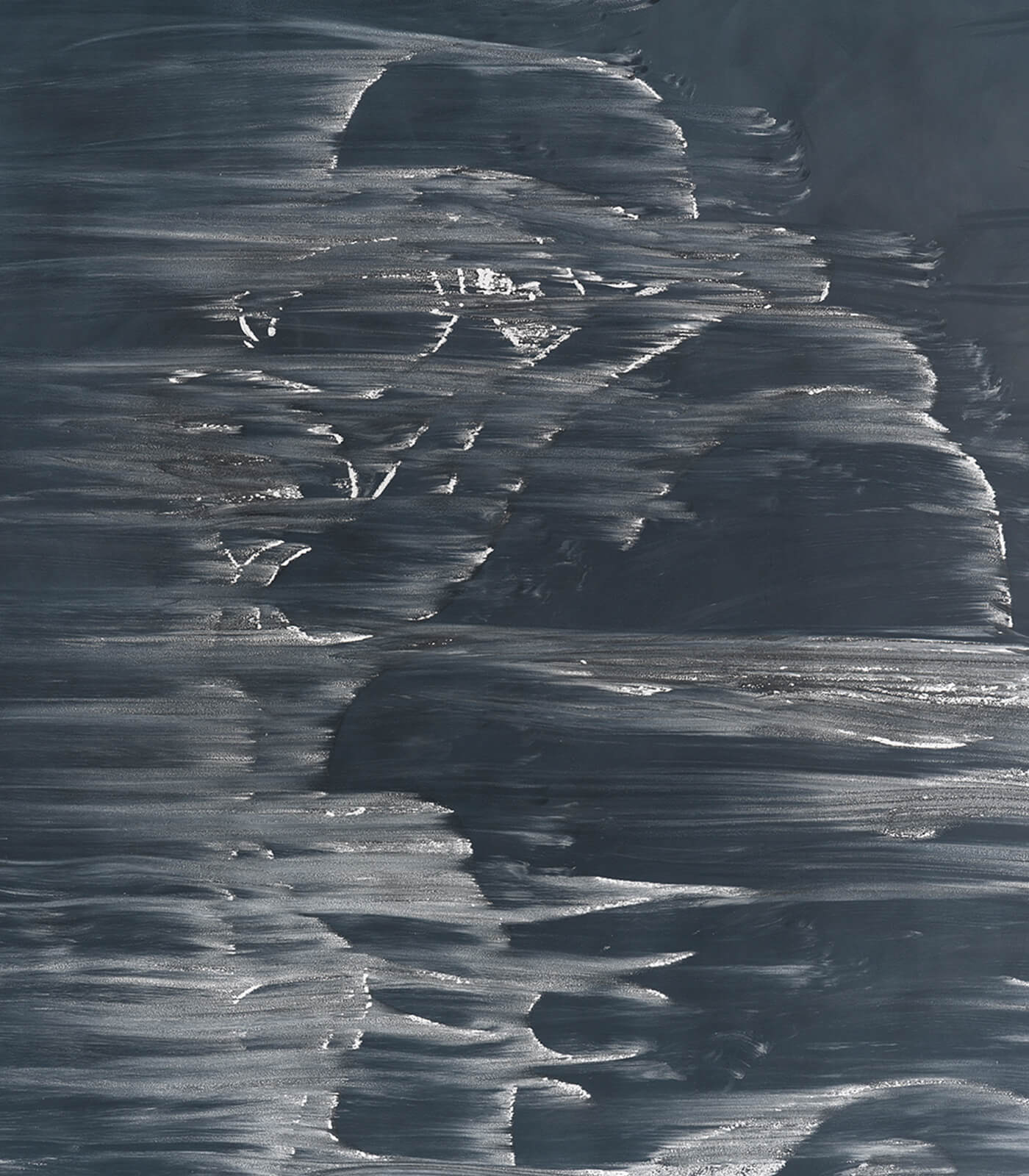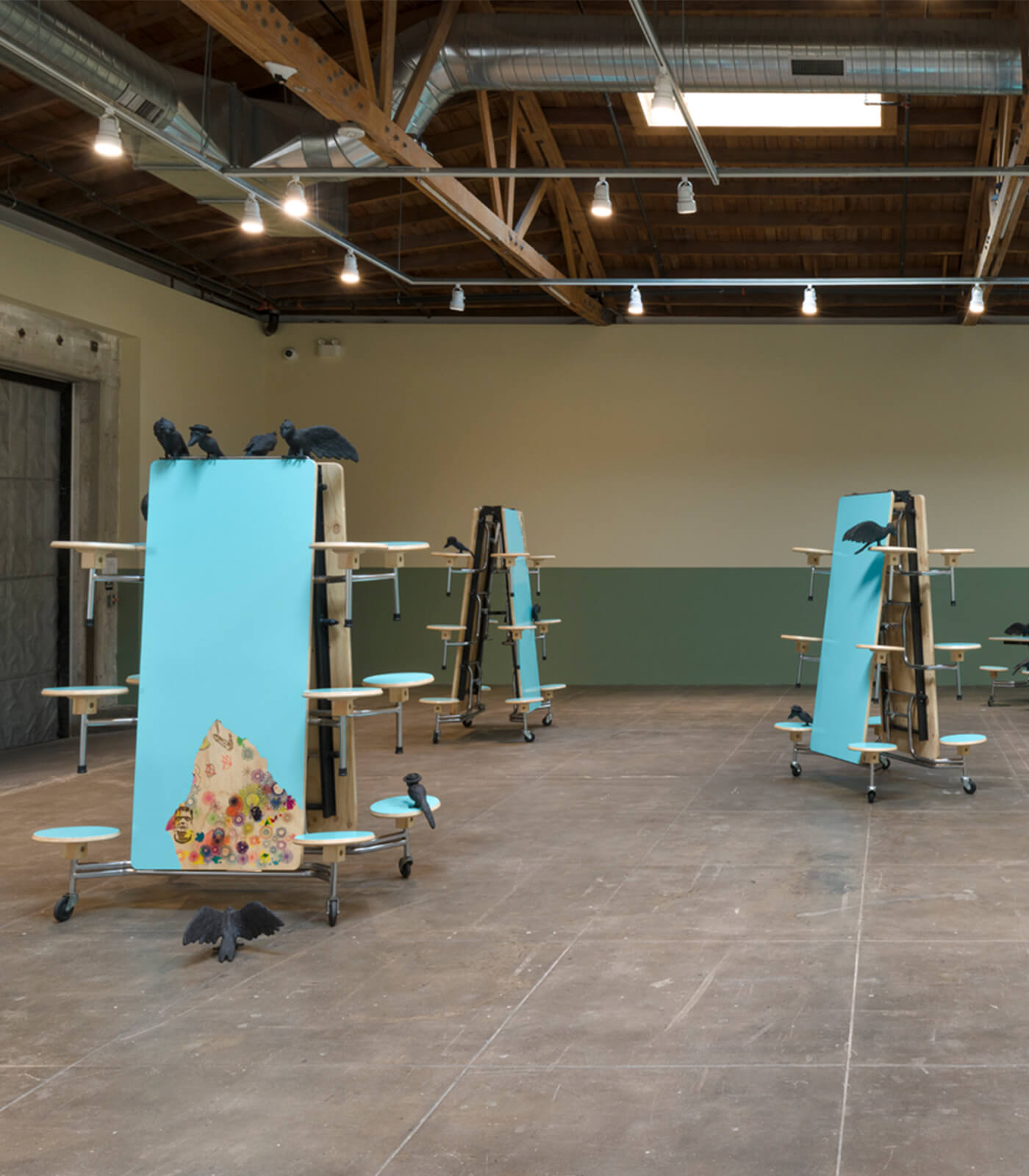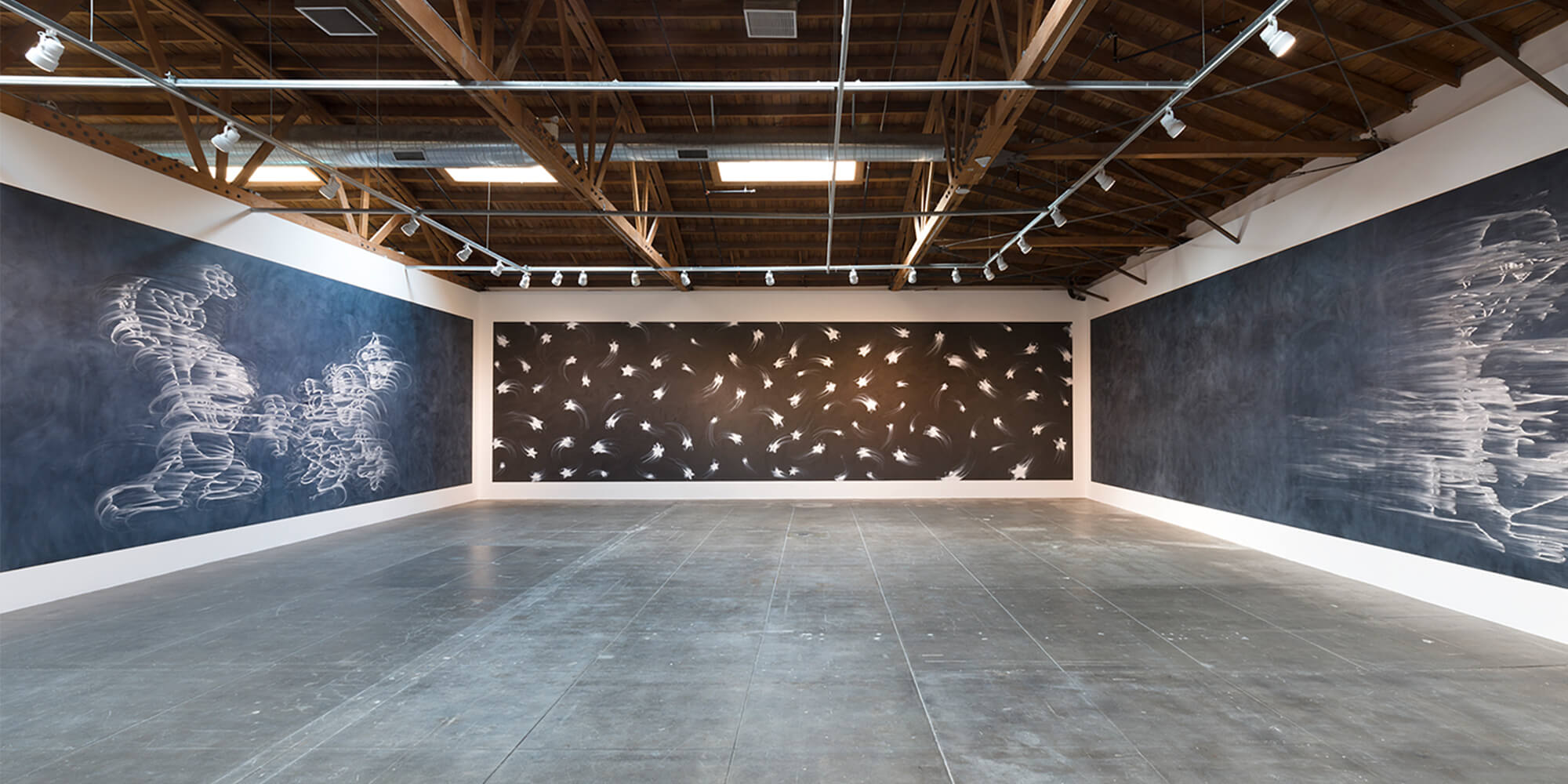
Gary Simmons
Remembering Tomorrow
17 February – 22 May 2022
Los Angeles
For over 30 years, Simmons’ multidisciplinary practice has probed American history to examine the pervasive nature of racist ideology and its manifestations in visual culture.
Explore the exhibition
Gary Simmons’ first exhibition with Hauser & Wirth debuts new paintings, wall drawings, and sculpture, as well as the installation ‘Recapturing Memories of the Black Ark.’ Drawn from both personal and collective memory, his works address themes of race, identity, politics, and social inequality, and the ways in which these issues are both evident and concealed in the cultural landscape.


Recapturing Memories of the Black Ark
On view in the gallery’s courtyard, ‘Recapturing Memories of the Black Ark’ is a work created from amalgamated materials sourced from the Tremé neighborhood of New Orleans in the aftermath of Hurricane Katrina. Inspired by the studio of legendary Jamaican record producer Lee ‘Scratch’ Perry, this sculptural installation will be the site of numerous activations throughout the duration of the exhibition.
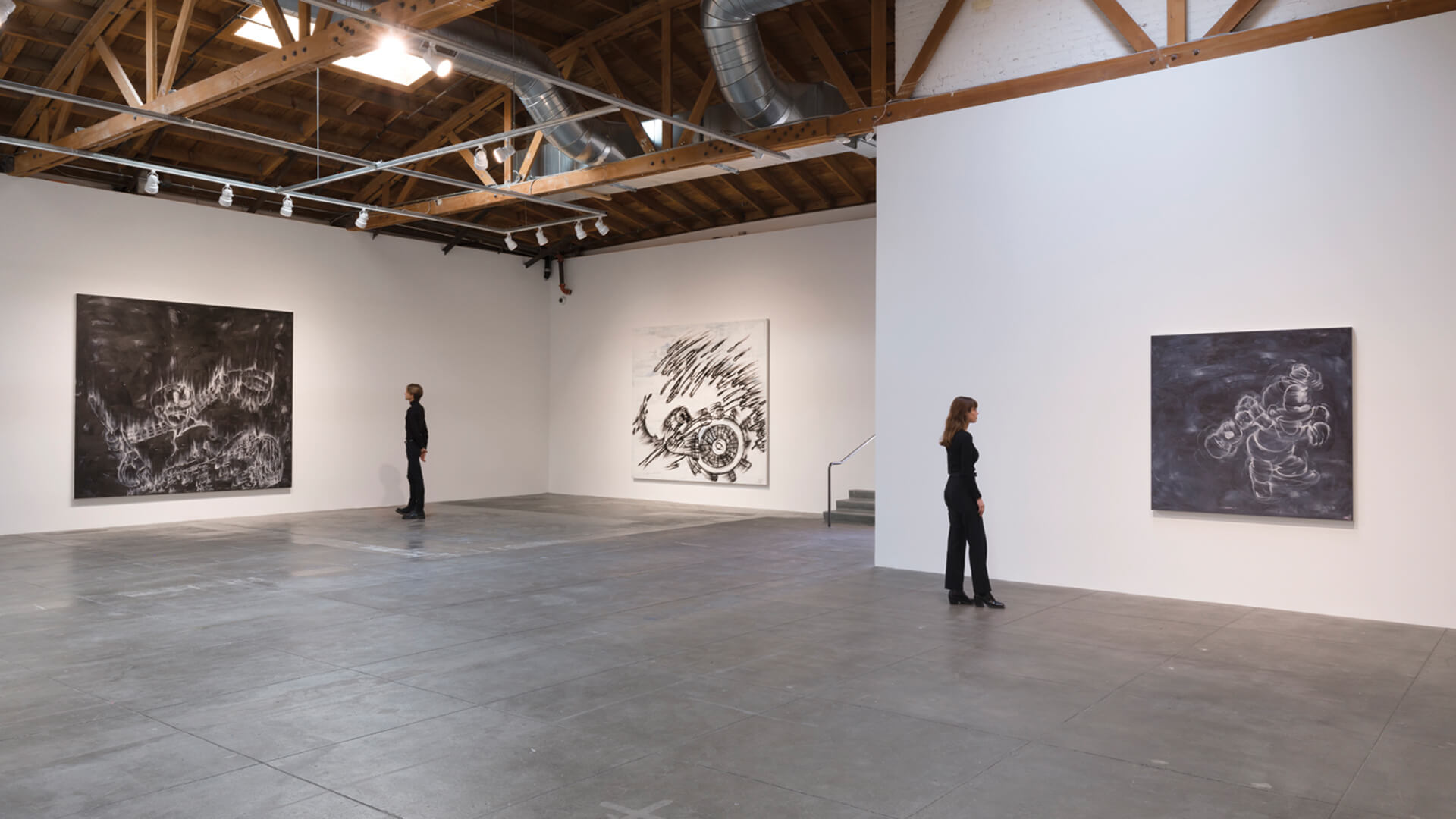
‘Remembering Tomorrow’ foregrounds Simmons’ distinctive contributions to contemporary image making, particularly through his use of erasure as a form of Action Painting freighted with deep cultural significance. Simmons wipes the surface of his work while the paint is still wet in order to smear the image so that it simultaneously emerges and disappears. This tactic is central to the new paintings on view, in which Simmons presents the viewer with racialized imagery once prevalent in American popular culture, including such archetypical cartoon characters as Honey and Bosko.
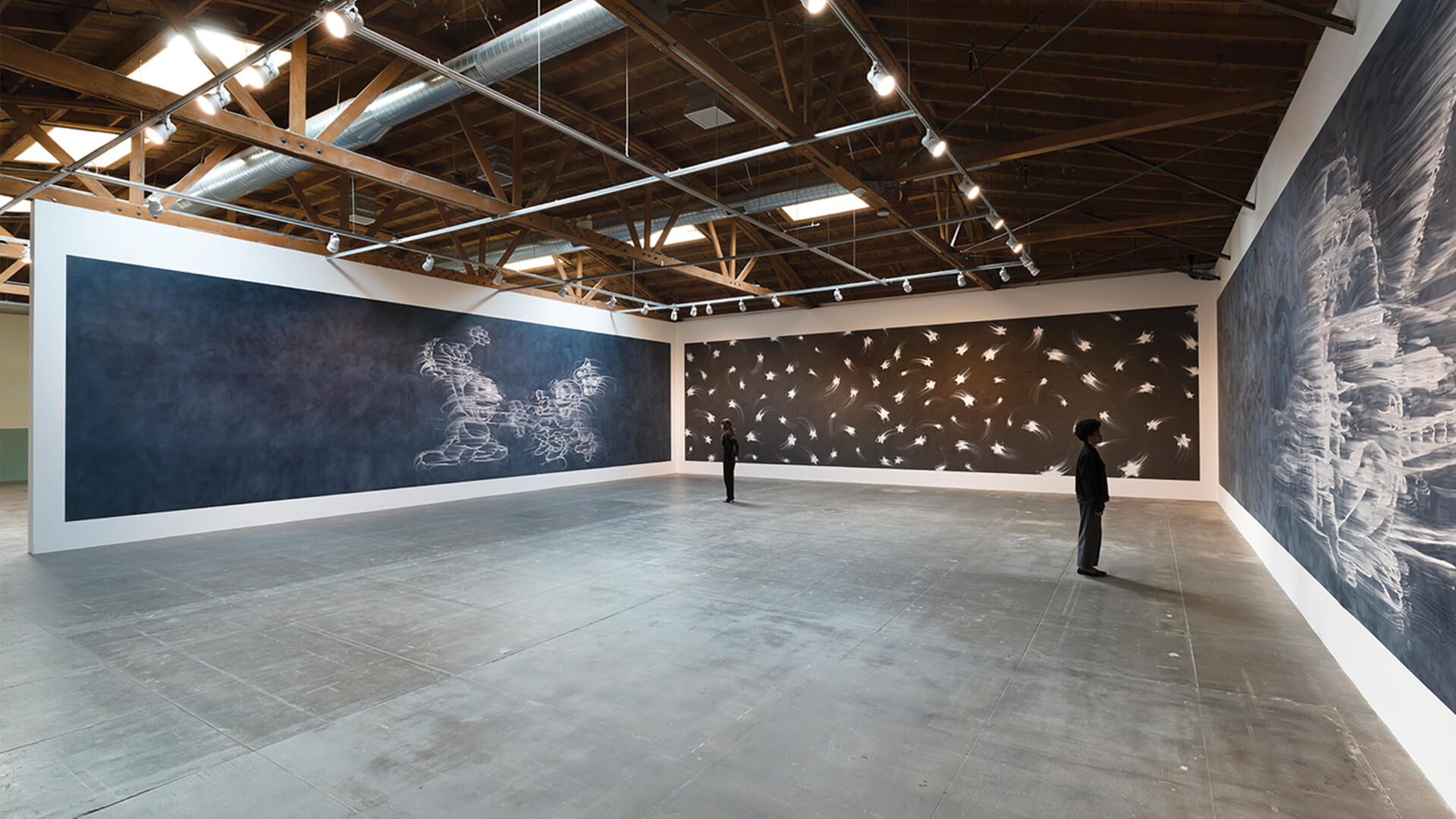
The exhibition includes four massive wall drawings created onsite that also employ the artist's erasure technique and feature similar motifs as those found in the paintings. Their fragile surfaces, achieved through either inky black paint or dusty chalk, highlight Simmons’ technical prowess and ability to capture the poignancy of time’s passage: by retaining the lasting gestural marks of his working process and physical presence in the space, these drawings hint at their own ephemeral nature and the transience of memory.
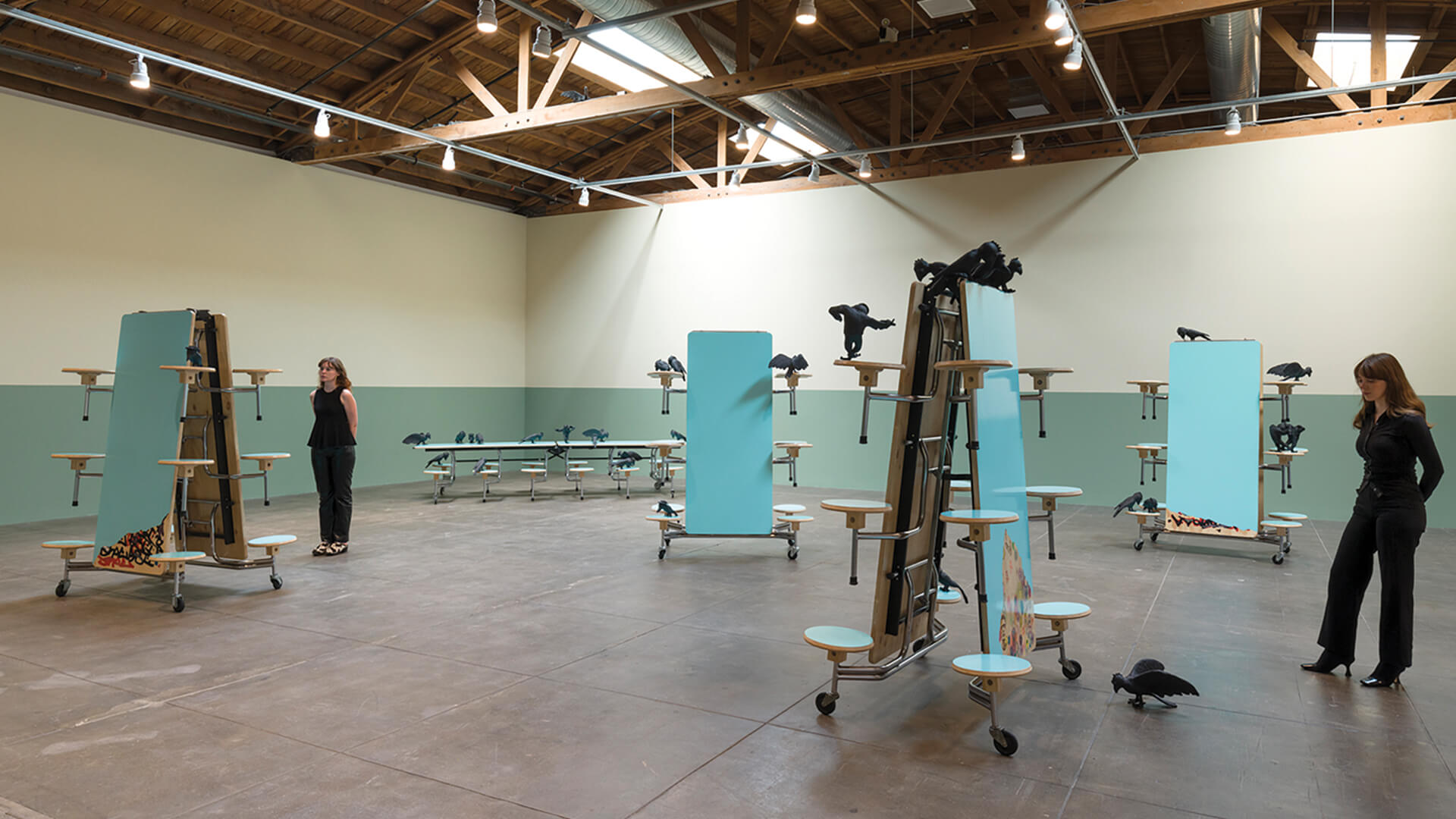
Revisiting motifs found in his early works, Simmons reconsiders the aesthetic possibilities of public school cafeteria tables in ‘You Can Paint Over Me But I’ll Still Be Here,’ a new sculptural installation. The work is comprised of five tables arranged in dynamic configurations with groups of figures representing racist tropes from historic cartoons. In this work, Simmons establishes the school lunchroom as analog for society at large – a site where a distinct social hierarchy reigns and identity is shaped and performed.

On view in Los Angeles
‘Gary Simmons. Remembering Tomorrow’ is on view now through 22 May 2022 at Hauser & Wirth Los Angeles. Please visit our location page to plan your visit.
About the Artist

Gary Simmons
One of the foremost artists of a generation which emerged during the late 1980s and early 1990s, Gary Simmons has achieved wide acclaim over the past three decades for his work which explores the politics of race, class and social stereotypes through painting, sculpture, sound and architectural environments. Simmons uses imagery drawn from popular culture to create works that address personal and collective memories.
Born in New York in 1964, Simmons received his BFA from the School of Visual Arts in 1988, and his MFA from CalArts in 1990, studying under the tutelage of Charles Gaines, Michael Asher, Catherine Lord, and others. Early in his practice, Simmons established a studio in a former school in New York City. At this stage, he was working predominantly in sculpture, a medium he would return to in subsequent decades. Works from this period, such as ‘Big Dunce’ (1989), use schoolroom objects to address racial inequality and institutional racism through the filter of childhood experience, themes seen most explicitly in ‘Six-X’ (1989), comprising six child-sized Ku Klux Klan uniforms hanging from a schoolhouse coatrack.
Simmons’ use of pedagogical motifs, in particular readymade chalkboards, led to the formal and aesthetic breakthrough that would inform much of his subsequent work, in which erasure of the image has been a powerful and recurring theme. Outlines of characters, scenes and words—based on 20th-century cartoons steeped in the racist traditions of minstrelsy, disappeared architectural sites, vintage film title cards, evaporating clouds of smoke and stars—are drawn or painted then blurred and smeared by hand. The tropes of erasure and ephemerality suggest the fleeting nature of memory and histories re-written. As the artist explains: ‘I started to think about how images on blackboards can never be fully erased. It was about trying to erase a stereotype and the traces of the racial pain that you drag along with you.’ A landmark piece commissioned for the Whitney Biennial, ‘Wall of Eyes’ (1993), picturing a smudged field of cartoon eyes drawn with chalk over slate paint applied directly to the wall, revealed the aesthetic possibilities of chalkboard at a monumental scale.
In further key commissions, Simmons has expanded beyond the confines of museum and gallery walls, creating performative and site-specific works which underline a relationship to a trajectory of art history that includes minimalism and conceptual art. For ‘Sky Erasure Drawings’ (1996), commissioned by the Museum of Contemporary Art Chicago, airplanes temporarily inscribed vapor stars in the daytime sky using liquid paraffin. For his immersive installation, ‘Fade to Black’ (2017), for the California African American Museum in Los Angeles, Simmons created five monumental wall drawings featuring the titles of vintage silent films and the names of largely forgotten African American actors in big typewriter-style letters blurred with ghostly traces. In a series of works from 2019, Simmons mined the architecture of surveillance through depictions of watchtowers and lighthouses. Deliberately ambiguous, these works collapsed the boundaries between signifiers of safety and those of control.
Simmons’ immersion in music has continually informed his practice which draws inspiration from dub, punk, hip-hop, reggae, and rap. Particularly influenced by the genres’ race and class-focused politics, the artist has created a number of works tracing the voices in music that have shaped contemporary culture. Simmons attracted significant critical attention in 2014 for his stacked speaker piece ‘Recapturing Memories of the Black Ark’. Inspired by Jamaican sound systems, the work is a living sculpture, with performers invited to activate it and then leave the configuration they utilized behind until the next performance. The work’s ongoing history offers both a contrasting and complementary approach to the record of the past offered by the artist’s erasure paintings.
For a site-specific installation commissioned for Culture Lab Detroit in 2016, Simmons was inspired by the guerrilla marketing style of fly-posting to promote gigs. Using found posters sourced from flea markets and the internet, he manipulated the originals, saturating the colors or reworking the texts, before layering onto the wall. This process has subsequently made its way into other works on plywood and canvas that evoke the fragmentation between individual and collective memory that preoccupies much of Simmons’ practice.
In his most recent works, Simmons continues to engage with popular culture, however, in an increasingly nuanced and abstracted way, as his focus shifts towards the history and materiality of painting and sculpture. Simmons has also reintroduced racist cartoon characters such as Bosko and Honey from the Looney Toons franchise and the crows from Disney’s film, ‘Dumbo’. Combined with the use of erasure, the artist references the attempt to cover up the engrained prejudices revealed by the popularity of such cartoons. Though these subjects first appeared in Simmons chalkboard drawings from the early 1990s, his newest works demonstrate an exploration of painterly issues such as background, depth of field, process and layering, citing Albert Oehlen and Martin Kippenberger as influences. The process involves a constant building and removal of up to fifteen layers of paint, evoking layered histories lying deep beneath the canvas. Simmons likens this effect to aged chalkboards, containing the traces of years of markings.
Gary Simmons has been the subject of solo exhibitions both nationally and internationally, including Henry Art Gallery, Seattle; California African American Museum, Los Angeles; Modern Art Museum of Fort Worth; and Kunsthaus Zürich. Selected group exhibitions include Museum of Modern Art, New York; Walker Art Center, Minneapolis; and Stedelijk Museum, Amsterdam; among others. Simmons was featured in Thelma Golden’s landmark 1994 ‘Black Male’ exhibition at the Whitney Museum of American Art in New York, Franklin Sirmans’ 2014 Prospect Triennial in New Orleans, and Okwui Enwezor’s ‘All the World’s Futures,’ for the 2015 Venice Biennale.
In 2021, Simmons was appointed a National Academician by the National Academy of Design. He is the recipient of the Joyce Alexander Wein Prize, Studio Museum of Harlem; USA Gund Fellowship; Penny McCall Foundation Grant; InterArts Grant; National Endowment for the Arts; and the Aspen Award for Art.
The first comprehensive institutional survey of Simmons’ work, ‘Gary Simmons: Public Enemy,’ was on view at Museum of Contemporary Art Chicago in 2023 and traveled to Pérez Art Museum Miami from 2023 – 2024.
Inquire about available works by Gary Simmons
On view now through 22 May 2022 at Hauser & Wirth Los Angeles.
Current Exhibitions
1 / 11
